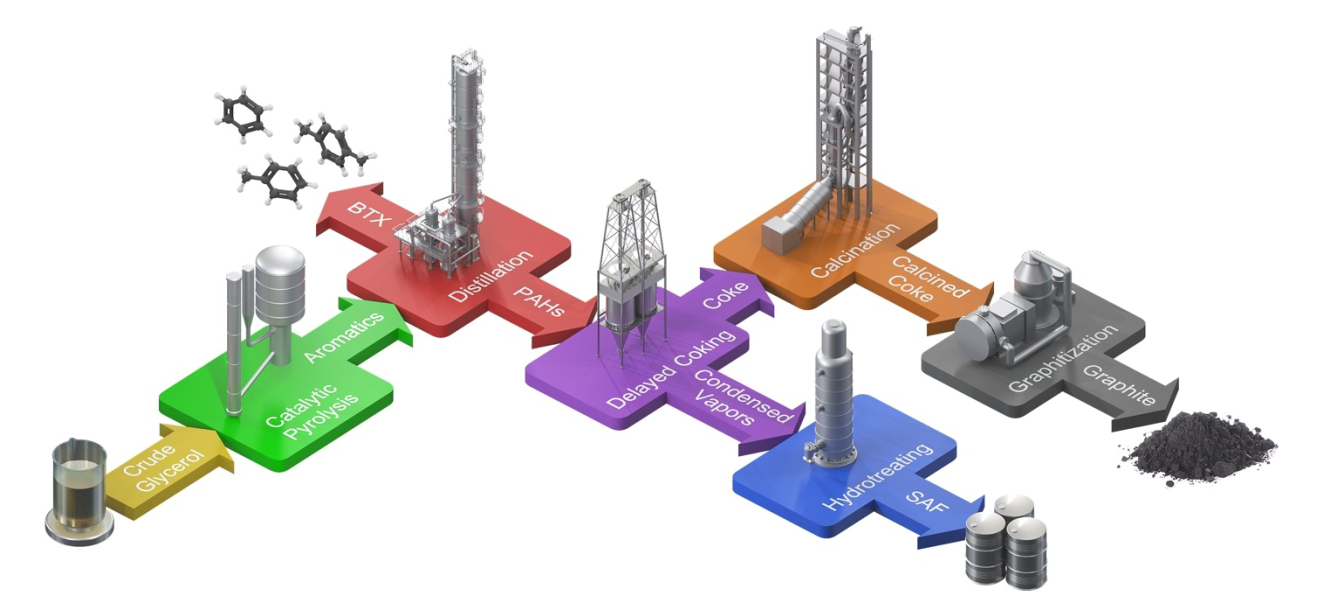
Sustainable Graphite and Jet from crude glycerol
BioBTX, a pioneering developer of renewable aromatics technology in the Netherlands, has
together with NC State University, NREL and BIRLA Carbon found a novel production route for SAF
and synthetic graphite. The novel production route explores the valorization of poly aromatic
hydrocarbons (PAH), produced out of crude glycerol via the BioBTX ICCP technology, into SAF and
synthetic graphite. The resulting bio-graphite exhibits excellent performance in lithium-ion battery
configurations.
By converting plastic waste and biomass into renewable aromatics, BioBTX is spearheading the
creation of a circular chemical industry, significantly reducing carbon emissions and reliance on fossil
fuels. Aromatics, essential for producing every-day products like insulating foams, coatings, PET
bottles, batteries, and pharmaceuticals, will now have a sustainable alternative to fossil-based
sources, presenting a major opportunity for circular business models.
The presented study explores a novel valorization pathway for PAH-rich aromatic oil, by transforming
them into battery-grade graphite and sustainable aviation fuel. The research was performed together
with North Carolina State University, the National Renewable Energy Laboratory (NREL), Birla Carbon
and BioBTX. Through the upcycling of the PAH-fraction into products for high value applications, not
only the circularity level of the plastic waste and biomass recycling increases, also the strategic
dependence of graphite can be decreased.
Ton Vries, CEO of BioBTX, says: “We are excited about this novel production process and additional
use of the aromatics. This not only increases the overall application of our aromatic oil, but can also
significantly contribute to achieving a circular economy. We are looking forward to explore the next
steps for realizing a circular graphite value chain.